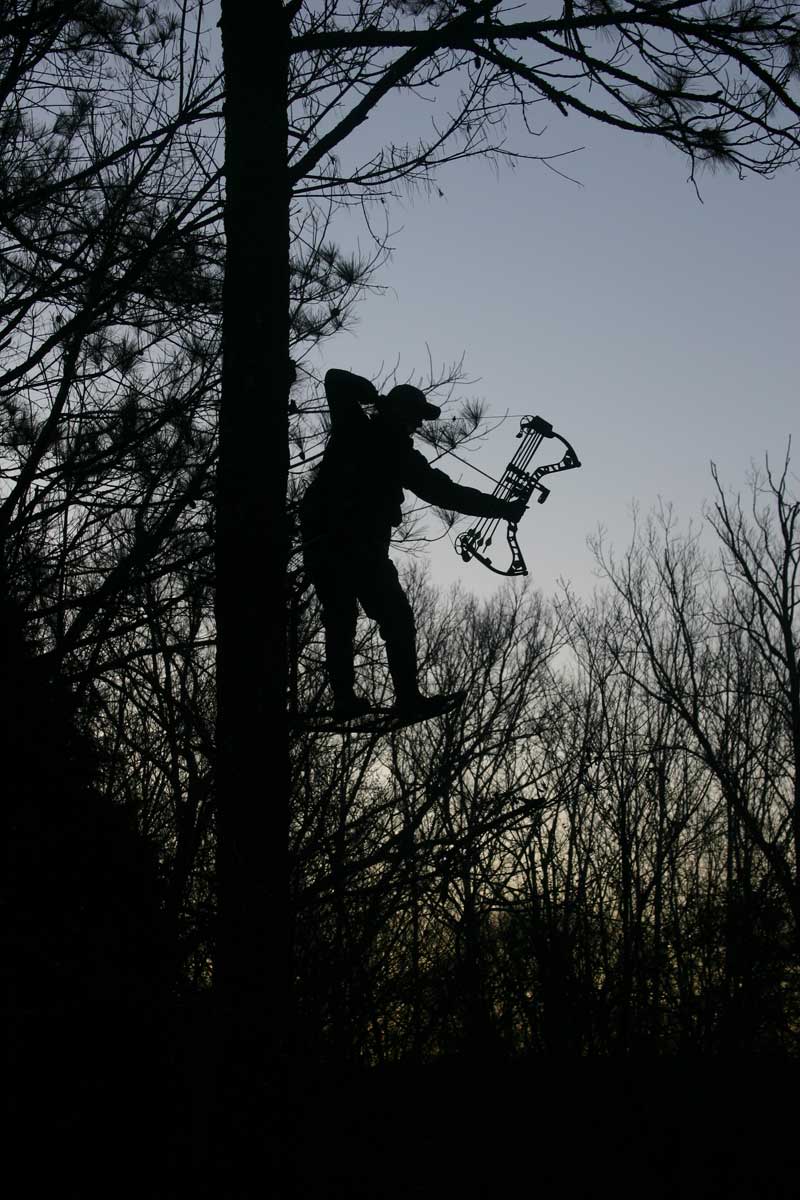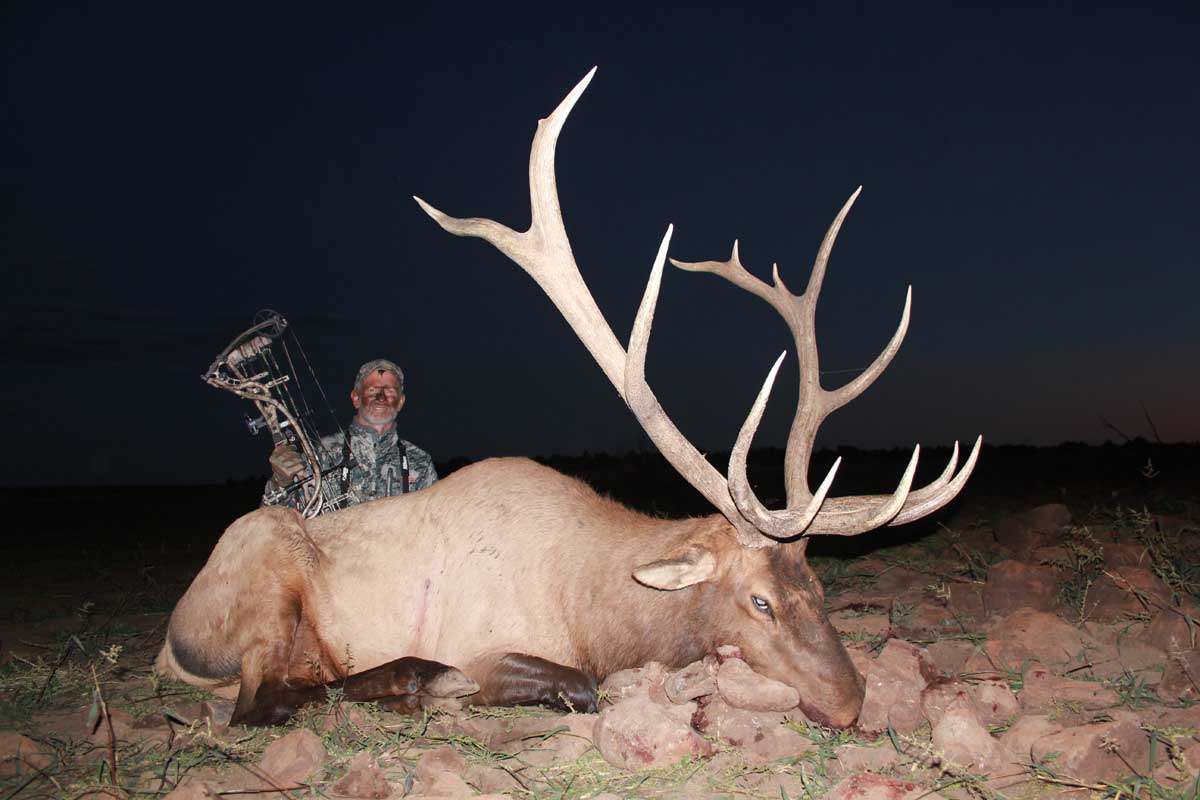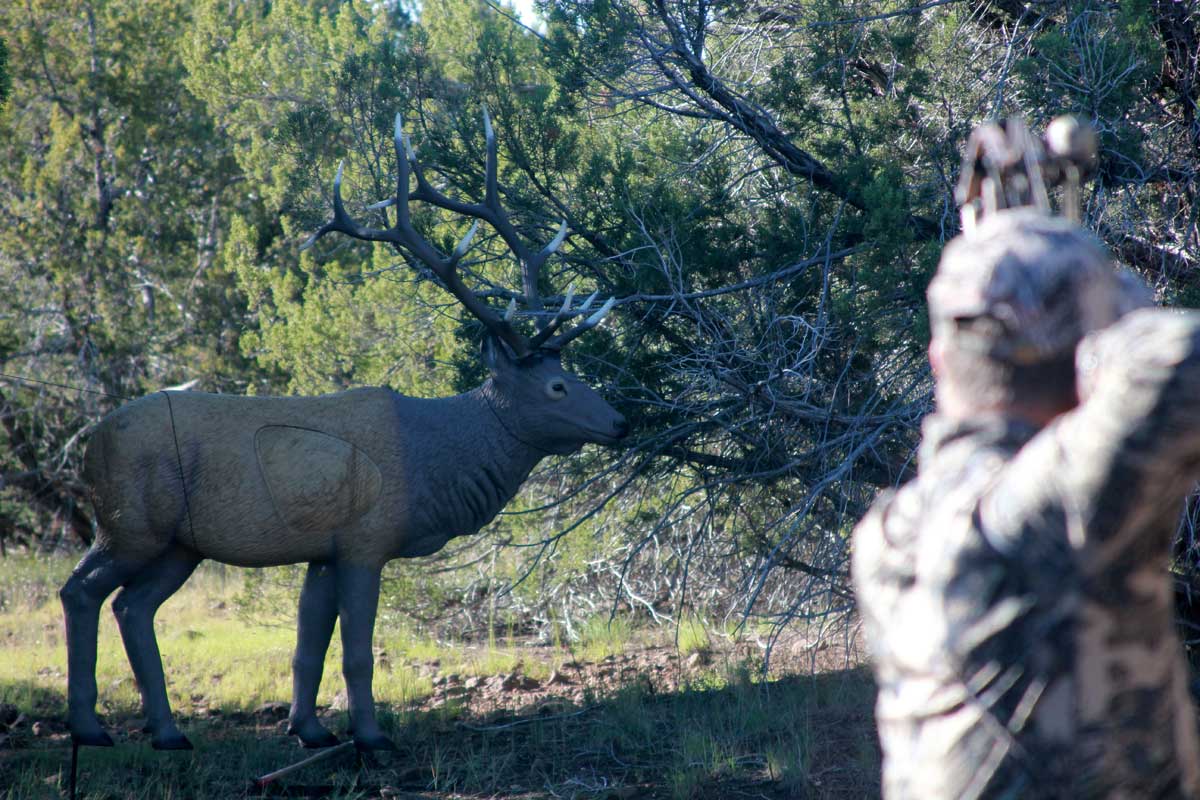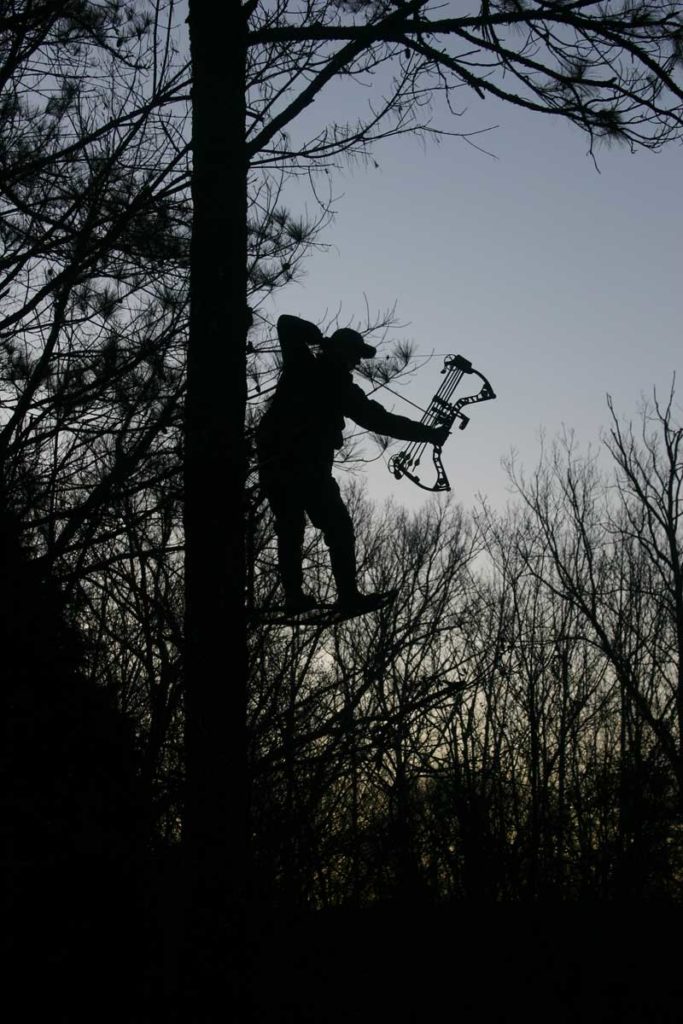
I’ve always been a bowhunter suspicious of equipment change. Not that I don’t embrace technology, it’s just that, over the years, I’ve seen many equipment “improvements” that were supposed to revolutionize the game that, in the end, turned out to be “fake news.”
One such genre has been devices to help us track our arrows after the shot and aid in animal recovery. There have been electronics inserted into the arrow itself, tracking devices that were supposed to leave a small electronic located inside an animal, stuff like that. Too complex, too expensive, too something — and often, illegal in many states.
So when I first heard about arrow nocks that lit up, I thought to myself, “So what?” I began playing around with them a little bit, watched the technology evolve, watched as states banned them as being unethical for reasons I never understood, until just a few years ago, when it seemed like the product category hit its stride. I began bowhunting with them a lot, and now it’s a rare hunt that I do not use them.
History Lesson
Back in 1998, bowhunter Curtis Price grunted up a whitetail buck, shot, watched the deer race off, then didn’t know if he’d hit or missed. It took him a long time to find his arrow and confirm that it had been a clean miss. As he drove home, his mind began racing. “Wouldn’t it be great if I had a nock that lit up, allowing me to not only see my arrow in flight but to also mark the location of the arrow if I missed?,” he thought. And then — no pun intended — the light went on.
Curtis’ first thought was to build a nock that used a chemical mix to light it up, but when he stopped at his brother Eric’s on the way to home to explain his idea, Eric suggested using a miniature LED light and battery. There was some precedence for this thinking, as illuminated fishing bobbers had been around since the 1970s. Voila! The lighted nock was on its way to becoming a reality. But like anything else, delivering a product that worked consistently and did not impede arrow flight took time. It was four years and 17 prototype designs later before the Prices filed a patent in 2002 and The Burt Coyote Company and the original Lumenok were born. By 2004 both Cabela’s and Gander Mountain carried the Lumenok in their catalogs and archers started asking for them in local pro shops. Sales were so good that Curtis quit his day job as a union electrician and went fulltime trying to grow his new company.
Paddling Upstream
Lighted nocks did not exactly rocket to stardom. Because they are electronic, many thought they somehow gave a bowhunter an unfair advantage. This line of thinking was promoted by traditional archers, as well as the Pope & Young Club, whose stated position was their use violated the tenets of “fair chase.” These positions were a combination of one part stubbornness, one part unwilling to change and adapt, and one part lack of education about the product itself.
Also, early lighted nocks were not perfect. They sometimes didn’t work as advertised, and once they lit up were hard to turn off. They sometimes lit up from jostling in a quiver, or didn’t light up at all. Their added weight — between 15-30 grains, more or less — sometimes changed the dynamic spine of an arrow shaft, which made tuning a challenge. And by adding weight to the rear of the shaft they reduced the arrow FOC — forward of center — balance point, which can make obtaining laser-like arrow flight difficult, especially at longer distances.
Proponents always have argued that, before the actual shot, lighted nocks do not provide any advantage to bowhunters that would give them an unfair advantage, violating fair chase ethics. In fact, just the opposite is true; in many instances their use can aid in the recovery of an animal. Despite this, many states stood by their decision to not legalize their use for hunting until the debate was resolved.
The breakthrough for the legality of lighted nock use in most states occurred in August 2014, when the Pope and Young Club amended its by-laws. The new by-laws now read, “The term ‘Fair Chase’ shall NOT include the taking of animals under the following conditions: By the use of electronic devices for attracting, locating, or pursuing game or guiding the hunter to such game, or by the use of a bow or arrow to which any electronic device is attached with the exception of lighted nocks and recording devices that cast no light towards the target and do not aid in range finding, sighting or shooting the bow.” The Club’s definition of bow hunting equipment was also amended to read: “Section II. Definition of a Hunting Arrow, Subsection B. Exclusions, Item 1. No electronic or battery-powered devices shall be attached to the arrow, with the exception of lighted nocks.”
Where Are They Legal Today?

In recent years, states slowly but surely began making the use of lighted nocks legal. By 2014, only five states — Colorado, Idaho, Montana, Oregon, and Washington — prohibited their use. Colorado legalized their use in 2015, Oregon in 2016 (Oregon’s big game hunting regulations now state “Archery hunters may use lighted nocks which have no other function other than to increase the visibility of the arrow and help hunters track wounded game.”), and in 2017, both Washington and Montana legalized their use. Only Idaho currently does not allow their use.
Why Use Lighted Nocks?
If you’ve never tried a lighted nock, perhaps you’ve seen how you can track arrows in flight equipped with them on one of the cable TV hunting shows or a YouTube video. This is not a joke. If you’re filming a buddy’s hunt, you can run the video back and see exactly where the arrow flew, which in turn can help you make educated decisions about following the animal up. If you’re with a hunting partner and keep your binos on the animal when he shoots, you can see precisely where the arrow hits, even in the dimmest light.
A lighted nock also makes finding your arrow easy after the shot. If you shoot in the waning hours of the day and don’t want to follow the animal up until the next day, with most lighted nocks having a battery life of 20 hours or more, the nock will still be lit up the next morning. Here’s something else I’ve done with them. More than once I’ve shot an animal in heavy cover near dark, found it, then had to leave it to go meet a buddy or get my vehicle. I take my arrow with the nock lit up and stick it vertically in the ground where it can be seen a long ways off. That makes walking back to the animal in the pitch black of night a snap.
Another thing I like to do is use lighted nocks when I practice my shooting. You can detect the slightest wobble or porpoising in your arrow flight, which means a trip back to the paper tuner is in order. When shooting at distance the lighted nock makes it easy to see exactly where you hit the target, too.
By the way, lighted nocks are also available for crossbow arrows, too.
Lighted nocks today are available in several easy-to-see colors, the most common being fluorescent green and red, but also pink, orange, and even blue. Some are also mini strobe lights, flashing like a mirror ball in a 1970s disco dance hall. My eyes see green more easily than the other colors, so I generally use those, but that’s just a personal thing.
What do they cost? Commonly sold in 3-packs, prices generally range from $24.99-$39.99. If batteries can be replaced — in some they can, others they cannot — replacement batteries cost about two bucks apiece.
Potential Problems

As mentioned earlier, paper tuning with a lighted nock vs tuning with a standard nock can require arrow rest and/or draw weight adjustments. This isn’t always the case, but I’ve found it pays to tune my hunting bows with exactly the same arrow, including broadhead and nock, that I’ll carry afield. Occasionally I have found that specific arrow shafts that turn perfectly with a standard nock and field tip do not tune when I add a lighted nock, and adjustments need to be made.
You also need to make sure to purchase lighted nocks that are sized to fit your shaft diameter exactly. Major makers of these products offer a couple of different sizes to fit the most popular hunting shaft diameters, so be sure to refer to their sizing chart. In an attempt to solve the selection problem — and reduce cost — in addition to selling nocks designed to fit specific arrow shaft diameters, Feradyne — parent company of both Nockturnal and Carbon Express Launchpad nocks — also offers the Nockturnal FIT Nock. These nocks include GT, H, S, and GT-sized bushings that fit the most popular four arrow shaft diameter sizes sold today and a nock that inserts snugly into each bushing.
Looking for an arrow shaft already equipped with the proper lighted nock? Then check out the Lumen-Arrow. This is an assembly of a 100 percent carbon shaft, selected and prepared for optimum Lumenok function. The Lumen-Arrow is a tough but lightweight all-carbon shaft that is 31 inches long, unfletched or fletched with Bohning Blazer vanes, and is straight within .003-inch. The shafts have been hand-squared on the nock end and are all spine-aligned to eliminate variables in flight. All that is left for the user is to cut the arrow to length, glue in the tip insert and screw on a point. All shaft prep on the nock end of the shaft has been completed.
Lighted nocks are mechanical devices, and as such, sometimes they fail. Sometimes the batteries don’t last as long as advertised. Last summer, while tuning a new high-speed compound bow, I had two of them actually break at the shot. These problems are extremely rare, however.
Do I Use Them?
I’ve always been one who has to be dragged kicking and screaming into the next phase of technological advancements in archery. Lighted nocks were no different. Once I found I could get my bows tuned perfectly and shooting tight arrow groups at long distance with them, I was sold. And they’ve helped me both recover animals and made my practice sessions more efficient.
Lighted nocks are the real deal. You owe it to yourself to give them a try.–Bob Robb


